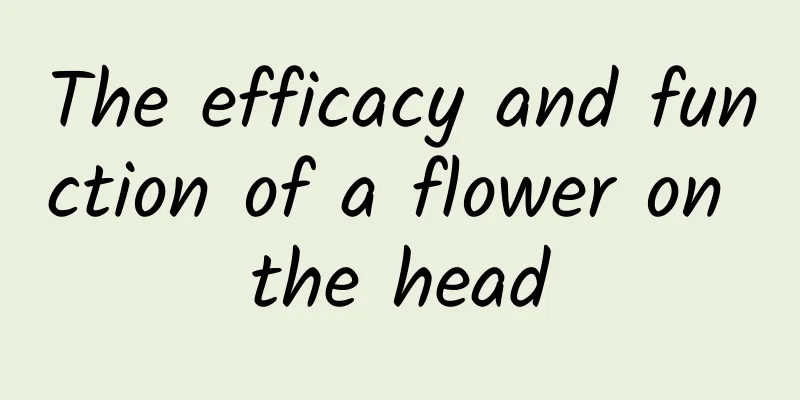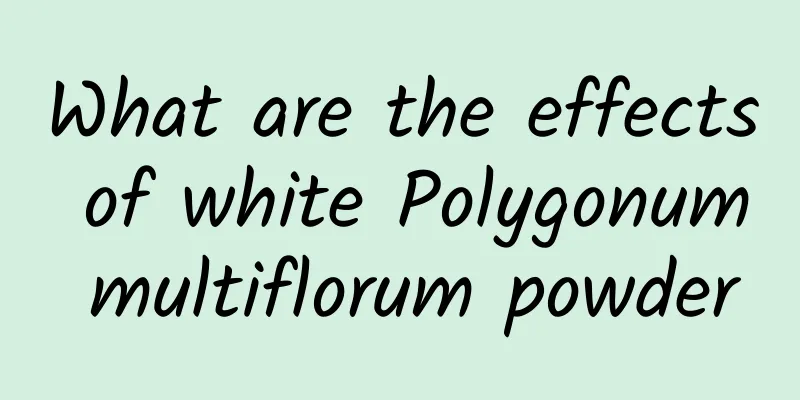The efficacy and function of a flower on the head

|
As a traditional Chinese medicine, do you know the medicinal value of the flower on the top of the head? How does Chinese medicine use the flower on the top of the head to treat diseases? And what should you pay attention to when using the flower on the top of the head to treat diseases in daily life? Don't worry, we will answer them one by one for you. [Source] Medicinal material source: the whole herb of Passiflora tubulosa, a plant of the Primulaceae family. [Original morphology] Annual herb with erect or knee-erect stem, 20-35cm high. Obtuse quadrangular, simple or branched, with nodes 4-10cm long, covered with multicellular pubescence 1-1.5mm long. Leaves opposite, 2-3 pairs densely arranged in whorls at the stem end, often 2-3 times larger than lower leaves; stem-end leaves with only very short petioles, lower leaves with longer petioles, usually 1/3-1/2 the length of the leaf blade; leaf blade lanceolate, 4-9cm long, 1-2.5(-3)cm wide, apex ± acuminate, base narrow, decurrent, sparsely covered with small setae or becoming glabrous above, pubescent below, denser along the veins, 3-5 lateral veins on each side, slightly more obvious below. The shortened racemes grow at the ends of stems and branches, forming a head-like inflorescence; the pedicels are very short or up to 5mm. The calyx is 9-15mm long, 5-lobed almost to the base, the lobes are lanceolate, the apex is gradually pointed to awl-shaped, the back is sparsely multicellular and pubescent, and the midrib is slightly raised; the corolla is yellow, 10-13mm long, the tube is 3-4mm long, 5-lobed, the lobes are obovate-oblong, the apex is obtuse or with a small tip; there are 5 stamens, the filaments are fused at the base to form a tube 4-5mm high, the separated part is 3-5mm long, the anthers are ovate-lanceolate, 1.5-2mm long; the style is up to 8.5mm long, and the ovary is densely pubescent. Capsule spherical, 3-3.5mm in diameter. The flowering period is from May to July, and the fruiting period is from July to October. [Habitat distribution] Ecological environment: Growing under forests and on roadsides in valleys at an altitude of 500-1650m. 【Nature and flavor】 Sour; bitter; cool 【Functions and indications】 Clears away heat and detoxifies; promotes blood circulation and reduces swelling. Mainly used for nameless swelling, poisonous snake bites, and traumatic injuries 【Usage and Dosage】 For external use: appropriate amount, crush the fresh product and apply it. 【Excerpt】 Chinese Materia Medica I believe that after reading the above explanations, everyone has a deeper understanding of the flower on the top of the head of traditional Chinese medicine, right? In fact, many foods or medicinal materials are the same. Only when we understand them can we eat them correctly according to our own situation and effectively help maintain our health. |
<<: The efficacy and function of tung oil
>>: The efficacy and function of Tongtian candle
Recommend
The efficacy and function of cycad leaves
Do you know about Cycas leaves? It is a common me...
How to eat white Poria cocos
White Poria cocos is not only a very good Chinese...
The efficacy and function of golden thread grass root
As a traditional Chinese medicine, golden thread ...
The efficacy and function of cinnamon
Cinnamon is also called Chinese cinnamon. It is a...
Can't tell the difference between elk, moose and reindeer? What kind of deer does the English word "elk" refer to?
In this age of Internet development, when we come...
The efficacy and function of small pig bristle seven
Herba Pieris is a kind of Chinese herbal medicine...
The efficacy and function of Panax notoginseng saponins
Panax notoginseng is also known as Tianqi. Li Shi...
This parrot's dopamine dressing style is really hard to learn!
The gateway to the eastern and western hemisphere...
The efficacy and function of cypress root
Recently, major TV channels have launched various...
Can pine pollen improve immunity?
We all know that pine pollen is the pollen produc...
What is Liuhan Chinese medicine?
There are hundreds of types of Chinese medicine, ...
Digital "immortality" is all the rage in Silicon Valley! Are digital people who can inherit family businesses a new IQ tax?
The environment we live in now is an era full of ...
[Smart Farmers] Rice field farming "Kaleidoscope": It turns out that these aquatic products can be grown in rice fields
In recent years, under the guidance of the Party ...









